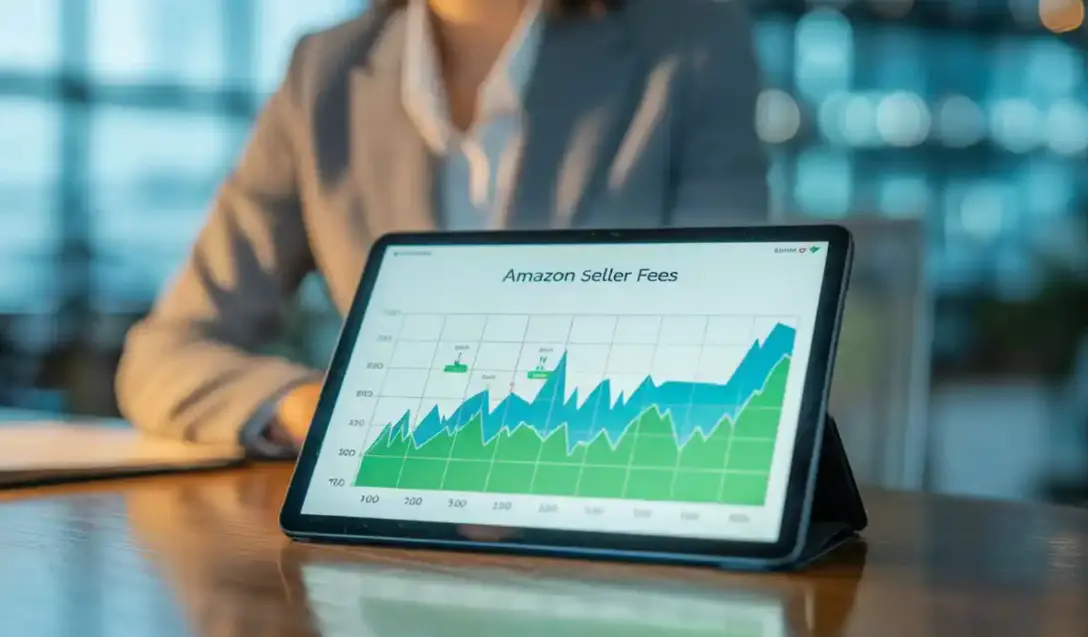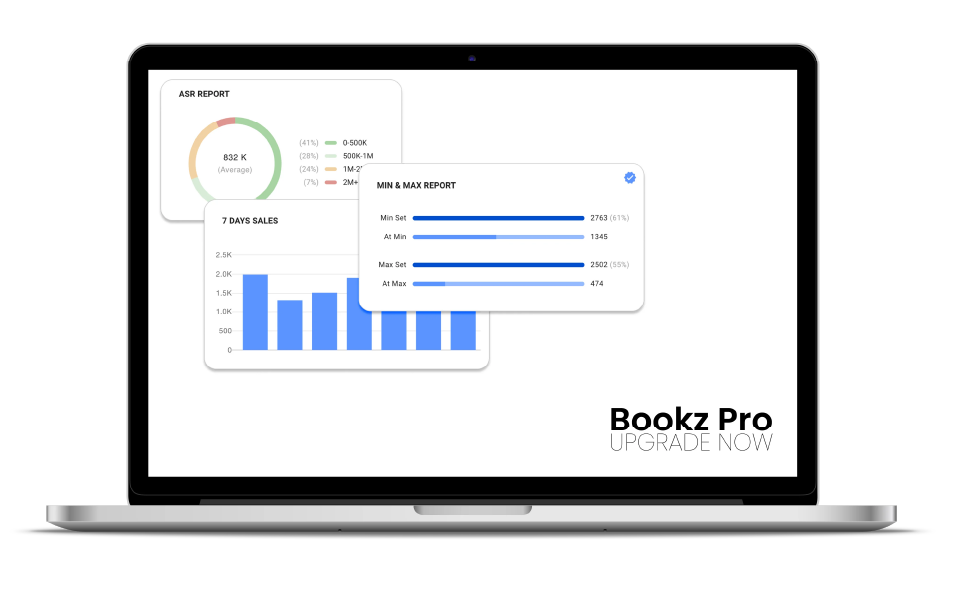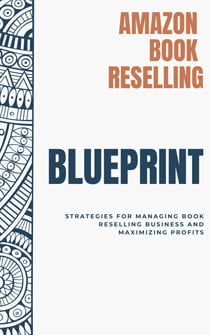How Much Does Amazon Selling Fees Cost in 2025? A Complete Breakdown for Sellers

Thinking about selling on Amazon but unsure how much the Amazon selling fees will cost in 2025? You’re not alone. Whether you’re listing a few items or running a full-time business, understanding Amazon selling fees is essential to pricing smart and protecting your profits.
Amazon gives you access to a massive marketplace, but that reach comes with costs—subscription fees, referral rates, fulfillment charges, and more. In this guide, we’ll break down how much Amazon selling fees cost in 2025, explain what each fee means, and help you choose the proper setup for your selling goals and budget.
Amazon Seller Account Types: Individual vs. Professional
Before you start selling on Amazon, you’ll need to choose between two types of seller accounts: Individual and Professional. The right choice depends on how many items you plan to sell and whether you’re treating this as a side hustle or a full-on business.
- Individual Plan: This option is great if you’re testing the waters or only plan to sell occasionally. There’s no monthly fee, but Amazon charges a $0.99 fee for every item sold. You won’t have access to advanced tools or bulk listing features, but it’s a low-risk way to get started.
- Professional Plan: Designed for more serious sellers, this plan costs $39.99 per month, regardless of the number of items you sell. You don’t pay the $0.99 per-item fee, and you unlock tools like bulk uploads, advanced reports, and eligibility for the Buy Box.
Amazon Referral Fees by Category
When you sell something on Amazon, the platform takes a cut of the sale, which is referred to as a referral fee. It’s essentially Amazon’s commission for bringing you the customer. Referral fees vary depending on the product category, so it’s important to know what you’ll be charged.
What Are Referral Fees?
A referral fee is a percentage of the item’s total sale price (including shipping and gift wrap, if applicable). You only pay this fee when a sale happens, and it’s automatically deducted from your earnings.
How Much Does Amazon Take?
Most categories have a referral fee of 15%, but some are higher or lower. For example:
- Books: 15%
- Consumer Electronics: 8%
- Clothing & Accessories: 17%
- Video Games: 15%
- Home & Kitchen: 15%
Each category may have different fee structures or minimum charges, so always double-check Amazon’s current fee schedule, especially if you sell in multiple categories.

Fulfillment Options and Their Costs
Once you make a sale on Amazon, you’ll need to decide how to get that product to your customer. Amazon offers two primary fulfillment options, each with its own set of associated costs: Fulfillment by Amazon (FBA) and Fulfilled by Merchant (FBM). Choosing the correct method depends on how hands-on you want to be and how much you’re willing to spend on logistics.
Fulfillment by Amazon (FBA)
With FBA, Amazon handles almost everything for you. You ship your inventory to their warehouse, and they handle packing, shipping, customer service, and even returns. This is an excellent option if you want to save time and scale up more quickly.
FBA Costs Include:
- Fulfillment fees: Charged per unit and based on item size and weight (e.g., $3.22 for a standard-size 1 lb item)
- Monthly storage fees: Charged per cubic foot of space your inventory occupies
- Long-term storage fees: Applied to items stored for more than 365 days
Sample Cost Breakdown:
If you sell a $20 book through FBA:
- Fulfillment fee: $3.22
- Storage fee: $0.15 (estimate)
- Referral fee (15%): $3.00
Your payout: Around $13.63 before other expenses
Fulfilled by Merchant (FBM)
With FBM, you list your products on Amazon but handle everything else yourself such as packing, shipping, customer service, and returns. This option gives you more control and can save you money if you already have your fulfillment process.
FBM Costs to Consider:
- Shipping costs: You pay to ship the order to the customer
- Materials and labor: Boxes, packing materials, and your time
- No FBA fees: But you still pay the referral fee
FBM can be more cost-effective for low-volume or oversized items, but it requires more time and hands-on effort.

Other Potential Charges You Should Know About
In addition to referral fees and fulfillment costs, several other charges may apply, depending on what you’re selling and how you manage your business. These fees aren’t always evident at first, but they can impact your bottom line, so it’s worth understanding them upfront.
1. Closing Fees for Media Items
If you’re selling media products, such as books, DVDs, CDs, or video games, Amazon adds a $1.80 closing fee per item sold. This charge is in addition to the referral fee and applies regardless of whether you’re using FBA or FBM.
2. High-Volume Listing Fees
If you have a very large catalog, think over 100,000 active listings. You may be subject to a high-volume listing fee. Amazon charges $0.005 per listing beyond the 100,000 mark. This primarily affects sellers with extensive inventories, such as large retailers or wholesalers.
3. Refund Administration Fees
When a customer returns a product and you issue a refund, Amazon keeps 20% of the referral fee (up to a maximum of $5 per item). This is called the refund administration fee. It’s something to keep in mind, especially if your return rate is high.
4. Long-Term Storage Fees (FBA Only)
If you’re using FBA and your inventory sits in Amazon’s warehouse for too long, you’ll be hit with long-term storage fees. These kick in for items stored more than 365 days and are charged per cubic foot or unit, whichever is greater.
Staying on top of your inventory levels is key to avoiding these charges.
Hidden Costs Sellers Should Watch For
While Amazon’s standard fees are clear, several hidden costs can catch sellers off guard:
- Returns and Refund Deductions
Amazon may deduct a refund administration fee (up to $5), and FBA fees might not be reimbursed. High return rates can quickly eat into profits. - Advertising (PPC) Costs
Amazon ads boost visibility, but costs add up—especially in competitive niches. Fees apply even without sales, so monitor campaigns closely. - Labeling and Prep Service Fees
FBA charges for labeling (around $0.30/unit) and prep (e.g., poly bagging, bubble wrap). These services are convenient but reduce margins over time. - Inventory Storage Mismanagement
Overstocking leads to high storage fees; understocking causes missed sales. Items stored over 365 days incur long-term fees. Stay lean and track sell-through rates.
How to Minimize Amazon Selling Fees
All in One Software
for Book Sellers
Scout Better – List Faster – Reprice Smarter
Over 30% Business Growth
Achieved by Our Clients

Amazon selling fees are part of doing business, but that doesn’t mean you can’t reduce them. With the right strategies and a bit of planning, you can trim unnecessary expenses and retain a larger portion of your profits. Here are some practical ways to minimize your Amazon selling costs.
Use Amazon’s FBA Revenue Calculator
Before listing a product, plug the numbers into Amazon’s FBA Revenue Calculator. It shows you the estimated referral fees, fulfillment fees, and your potential profit margin. This helps you compare different fulfillment options (FBA vs. FBM) and price your products strategically.
Optimize Inventory and Storage
- Avoid high storage fees by regularly reviewing inventory performance.
- Discount or advertise slow-moving items
- Don’t overstock low-demand products
- Use restock alerts to maintain ideal stock levels
Smart inventory management can lead to significant savings.
Monitor Advertising Spend
Track your ACoS (Advertising cost of sales) and adjust campaigns accordingly.
- Start small and focused
- Scale winning keywords
- Pause poor performers
Efficient ad spend boosts sales without wasting budget.
Use Third-Party Tools
Tools like Bookz Pro help track expenses, monitor price trends, and improve decision-making, saving time and money.
Are Amazon Selling Fees Still Worth It in 2025?
With all the fees, competition, and shifting policies, many new and experienced sellers ask the same question: Is selling on Amazon still worth it in 2025? The short answer is—yes, but only if you do it smartly.
Cost vs. Reach
Yes, Amazon takes its cut—but in return, you get access to hundreds of millions of potential buyers worldwide. That kind of exposure is hard to match. If you price your products correctly and manage costs well, the volume of sales can more than make up for the fees.
Scalable Business Model
Amazon provides the tools and infrastructure to scale your business fast, especially with FBA handling storage, shipping, and returns. Whether you’re selling as a side hustle or building a full-time brand, it’s one of the most accessible platforms to grow on.
Tools and Data Give You an Edge
Sellers today have access to more insights and automation tools than ever before. From profit calculators and repricers to inventory management platforms like Bookz Pro, it’s easier to stay informed, adjust quickly, and avoid common money drains.
Still One of the Best E-Commerce Platforms
Despite rising fees, Amazon continues to dominate online shopping. Shoppers trust the platform, use it daily, and rely on it for everything from daily essentials to niche products. For sellers, this means steady traffic and endless opportunity—if you’re prepared.
Cut Down Amazon Selling Fees and Maximize Profits!

Amazon Book Reselling Blueprint
Read now, explore our full guide. Your revolution starts here. Subscribe to get the blueprint!
Now that you know what Amazon selling fees cost in 2025, the next step is managing those costs effectively. Staying profitable means more than just understanding fees—it requires innovative tools and a transparent, strategic approach to managing costs.
Bookz Pro makes that easy. With features for tracking expenses, managing inventory, and analyzing pricing trends, it helps you keep more of what you earn. Try it FREE for 14 days plus an additional reselling blueprint includes strategies and tips to take control of your Amazon selling with confidence.
Conclusion
Selling on Amazon in 2025 can still be highly profitable but only if you understand what you’re paying for. From choosing between an Individual or Professional account to factoring in referral fees, fulfillment costs, and hidden charges like refunds, ads, and storage, every fee impacts your bottom line.
The good news? With smart planning, tools like Amazon’s FBA Revenue Calculator, and platforms like Bookz Pro, you can help manage your inventory and pricing, minimizing expenses and maximizing profits. By staying informed and strategic, you’ll be better equipped to succeed and thrive in today’s competitive Amazon marketplace.
Frequently Asked Questions
Amazon’s selling fees are $0.99 per item, in addition to referral fees, if you’re on the Individual plan. If you’re on the Professional plan ($39.99 per month), the $0.99 per-item fee is waived; however, referral fees still apply.
Referral fees vary by category. Most range between 8% and 15%, with books typically at 15%. This fee is based on the total sale price, including shipping and gift wrap (if applicable).
Yes. You may also pay fulfillment fees (FBA), storage fees, refund administration fees, and closing fees for media items. High-volume sellers may also face listing fees if they exceed 100,000 active listings.
FBA (Fulfillment by Amazon) includes fees for packing, shipping, and customer service. FBM (Fulfilled by Merchant) gives you full control over fulfillment, so costs depend on your own shipping and handling setup. FBA is more hands-off, but usually more expensive.
Use tools like Amazon’s FBA Revenue Calculator to plan ahead. Monitor your inventory levels, optimize advertising spend, and consider software like Bookz Pro to help track expenses and maintain healthy profit margins.



